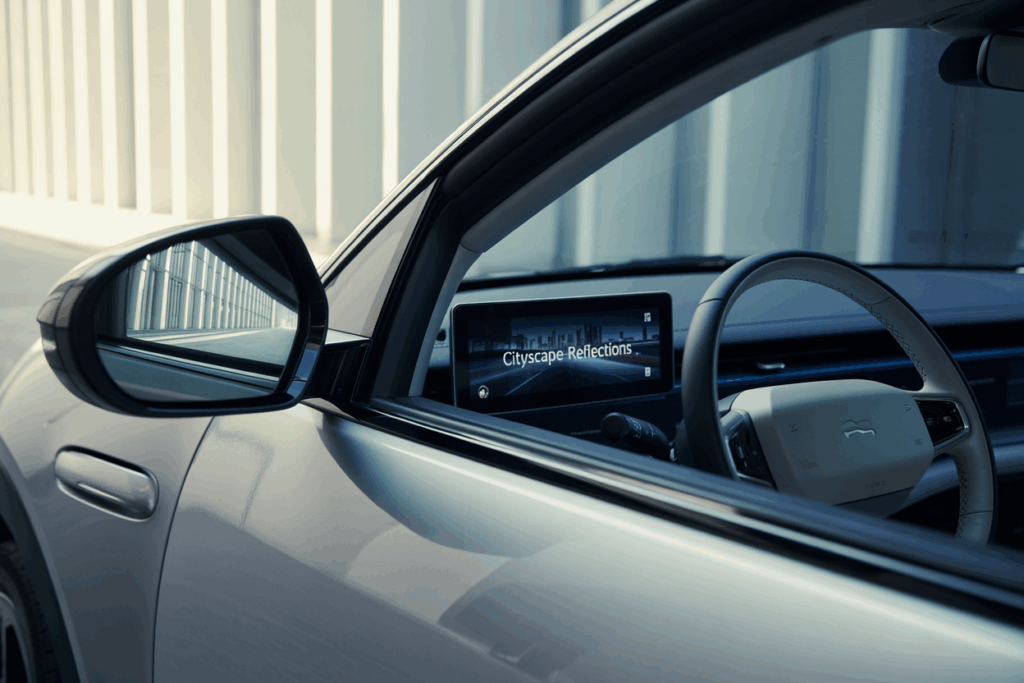You know those little mirrors sticking out from the sides of your car? They’ve been a thing for decades—but now they might be going the way of ashtrays and cassette decks. Thanks to modern cameras and screens, some cars are ditching side mirrors entirely and replacing them with tiny lens pods and high-def displays. The goal? Better visibility, less drag, and more futuristic vibes. But not everyone’s ready to say goodbye to those trusty side mirrors just yet. Here’s why camera mirrors are making moves—and what it could mean for your next ride.
The Drag Is Real and Mirrors Don’t Help
One reason side mirrors are on the chopping block? Aerodynamics. Traditional mirrors stick out like little wings and mess with airflow. That adds drag, which affects fuel efficiency—especially in EVs where every mile counts. Replacing them with slim camera pods helps cars cut through the air smoother. Less resistance, more range. Science wins.
Visibility Gets a Glow Up
Mirror cameras offer a wider view than old-school glass. They can show blind spots better, handle low light more easily, and even cut down glare. Some systems adjust brightness automatically or highlight nearby cars so you don’t miss a thing. It’s like your side mirror got a night vision upgrade. Once you try it, going back to regular mirrors feels kinda… primitive.
No More Fog or Ice Buildup
Ever spent five minutes scraping ice off your mirrors in the dead of winter? Camera pods usually have built-in heaters, so they stay clear even in bad weather. That means no more foggy mornings or icy surprises. It’s a small win, but one that makes your cold commute way less miserable. Just another point for tech over tradition.
It Frees Up Interior Design Too
With cameras feeding into screens inside the car, designers get more freedom to shape interiors in creative ways. No need to angle mirrors just right or block parts of the window. Some models have screens built right into the doors, keeping everything sleek and easy to see. Bonus: no more awkward neck cranking to check your blind spot.
There’s Still a Learning Curve
Let’s be real—going from glancing at a mirror to looking at a screen takes some adjustment. Your brain is used to certain visual habits, and changing them can feel weird at first. Some drivers also say screen placement can feel distracting or unnatural at the beginning. But after a few drives, it starts to click. Like switching from buttons to touchscreens, it’s just a new normal.
Not Every Country Is on Board Yet
In the U.S., camera mirrors are still pretty rare due to regulations. Other countries—like Japan and parts of Europe—have been quicker to approve and adopt them. That’s why you’re more likely to see these setups on luxury imports or concept cars for now. But as laws catch up, you can expect to see a lot more screens and a lot fewer side mirrors on the road.
Cameras Can Do More Than Mirrors Ever Could
Some camera mirror systems include helpful overlays, warnings, or zoom features. They can even shift views automatically based on your speed or driving conditions. That’s something no piece of reflective glass can pull off. It’s like upgrading from a flip phone to a smartphone—you don’t just replace the function, you expand it.
Break One and It’s Gonna Cost You
Here’s the not-so-fun part: camera mirrors aren’t cheap to replace. A cracked side mirror? Annoying, but manageable. A busted camera system? That’s a whole repair bill you didn’t budget for. Some models let you replace the camera independently, but others bundle it with wiring and screens. So yeah, futuristic perks do come with a price tag.
They Make Cars Look Extra Futuristic
Let’s be honest—camera mirrors just look cool. Tiny winglets instead of bulky mirrors give cars a sleek, spaceship vibe. Designers love the aesthetic, and car lovers do too. It might not improve your driving skills, but you’ll definitely look sharper doing a three-point turn. Form and function for the win.
Side Mirrors Might Not Disappear Overnight
Even with all this tech, don’t expect every car to go mirrorless next year. Some folks prefer the simplicity of glass and reflection. And for now, not every manufacturer is on board. But change is coming, and slowly but surely, side mirrors might end up as one of those “remember when” features. The future’s rolling in—and it’s got a lot fewer edges.

